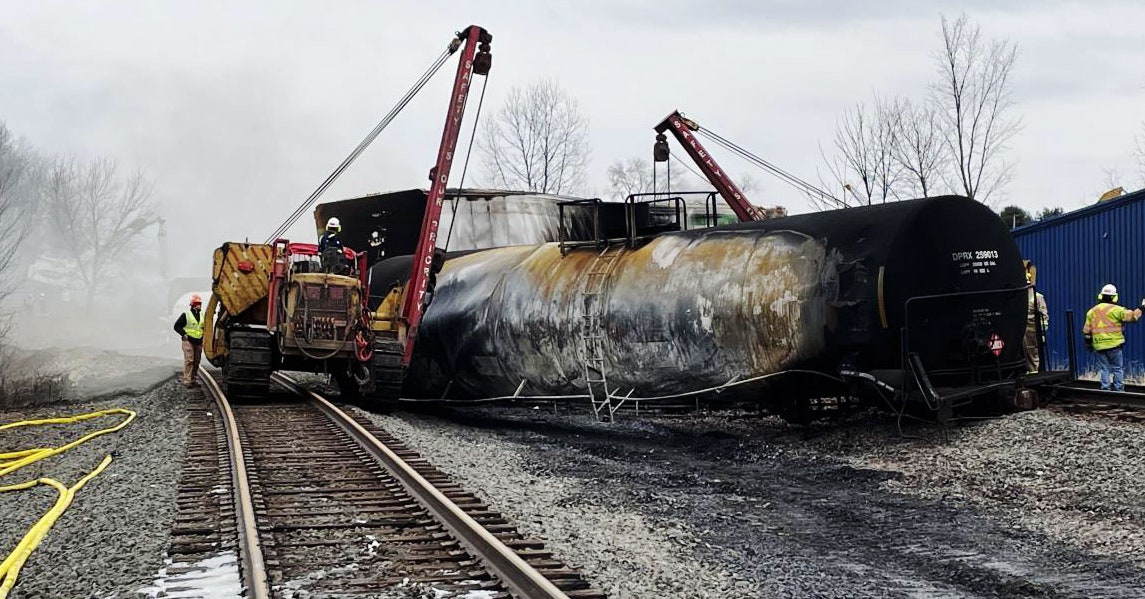
That’s what makes the disaster in Ohio so alarming. Five rail cars of vinyl chloride burned—some of it done intentionally to reduce building pressure—likely producing toxic compounds called dioxins. Because hot air from a fire rises, the flames from the train sent a black plume high into the air, potentially spreading toxicants far beyond the site of the derailment. “The thing about dioxins is they’re potent at really low levels, and are persistent and bioaccumulative,” says Schettler. This means they persist in the body instead of breaking down. “You don’t want dioxins deposited in the soil around East Palestine that are not going to go away, and are going to bioaccumulate in people who are exposed to it.”
The Environmental Protection Agency has deemed the air in East Palestine to be safe. Officials have also said the water is safe to drink. But there are still many unknowns about these individual chemicals and the way they mix together and burn, according to Gerald Markowitz, a historian of occupational and environmental health at the City University of New York. “There is real concern that there is no safe level of exposure to a carcinogen,” says Markowitz.
Given that it’s so toxic, what was vinyl chloride doing on a train? PVC is one of the most common kinds of plastic, used most notably in piping, but also in packaging and consumer products like shower curtains. There are some 5,000 businesses in the US alone that produce the various kinds of plastic, says Judith Enck, president of Beyond Plastics and a former EPA regional administrator. And they all need ingredients. “It’s not just trains, it’s also trucks moving the stuff,” says Enck.
And it’s not just vinyl chloride. Manufacturers have to add gobs of other chemicals to give plastic its plastic properties—things that make the polymer more heat resistant, for example, or more flexible. Many of these are known endocrine-disrupting chemicals, or EDCs, which make our hormones go haywire. That’s why bisphenol A, aka BPA, was singled out, after scientists linked it to cancer, behavioral conditions, and diabetes.
But it’s a game of whack-a-mole. When one chemical is found to be dangerous, manufacturers substitute in others that may be just as toxic, if not more so. “There hasn’t been the research to know if they’re safe, or if they are less dangerous but still of concern,” says Markowitz. It will probably take years before we know the potential side effects of replacement chemicals, he adds.
And BPA was just one of the 2,400 other chemicals in plastics that scientists consider to be of concern. A 2021 study found that exposure to plastic chemicals called phthalates could be responsible for 100,000 premature deaths in the US each year—and that was a conservative estimate.
The core issue is that what’s put in plastics doesn’t stay in plastics. When a bag or bottle breaks apart, it releases its component chemicals as leachates. Heat and freezing also fragment any plastic into microplastics, which have corrupted every corner of the environment, as well as our own bodies. They’ve been found in human lung tissue, guts, blood, and even newborns’ first feces. Yet we know little about the health consequences of microplastics, though early studies are finding that microplastics are highly toxic to human cells in lab experiments. The fire in East Palestine is a particularly alarming example of a crisis that’s worsening by the day.


